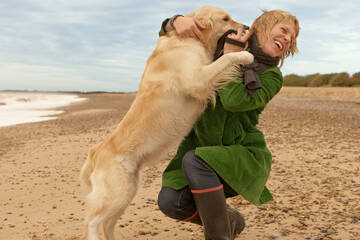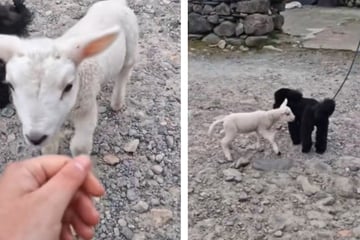How to trim dog nails: The best tips and tricks for cutting dog nails
If you can hear the sound of your dog's nails pitter-pattering on the floor, then they probably need clipping. TAG24's latest Dog Guide will take you through how to trim dog nails, offering you the best tips and tricks.
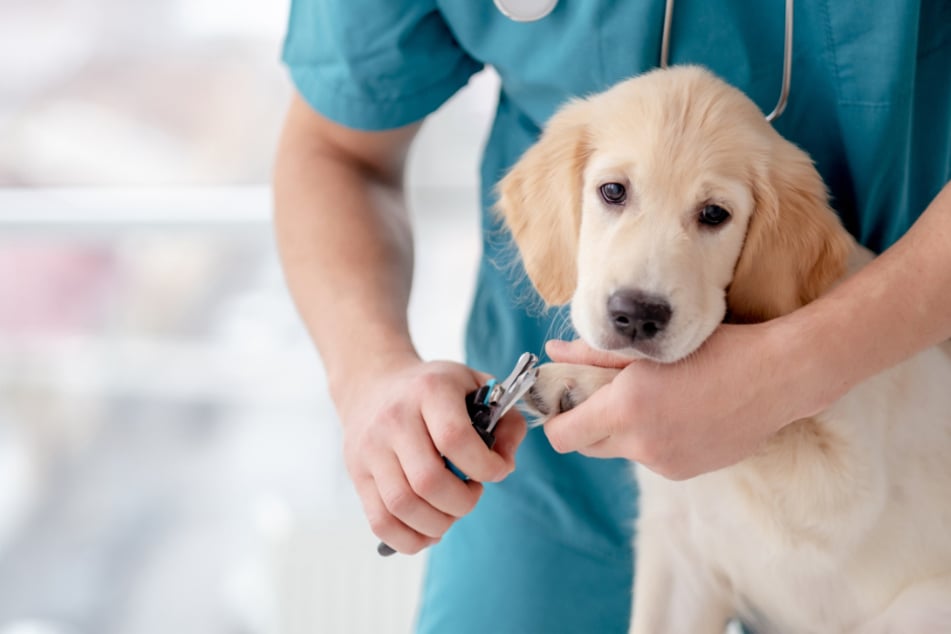
Dogs use their nails for digging, hunting, and spatial awareness. The number of nails they have varies between dog breeds, as some dogs have thumb claws on their front legs, and larger breeds sometimes have a wolf claw on the inside of each hind leg.
Yet, no matter how many nails they have, one thing is always important: trimming them.
Unlike cats, dogs cannot extend or retract their claws, which leaves them constantly in the way. There is no avoiding the need to trim dogs nails from time to time, so it's important for dog owners to know how to do it.
It's part of preventative care, and if you don't want to keep running to the vet each time your dog needs a nail cut, keep reading for some pointers.
Why do I have to trim my dog's nails?
If dogs walk mainly on soft ground (for example, in forests, on grass, or on carpet), their nails won't naturally wear down enough, becoming too long.
The same will happen if your dog doesn't exercise enough, or if it is older. If you are feeding your dog correctly, then they will have a diet that's rich in zinc and calcium, which also promotes claw growth. This can have some pretty serious consequences if they get too long.
Possible issues for dogs with nails that are too long include:
- Brittle or torn off nails
- Inflammation
- Injuries
- Harmful positioning of paws or degeneration of the joints
- Incorrect stress during movement, arthritis, or lameness
- Ingrown or torn off nails
- Pain
- Listlessness with any kind of movement
An owner's regular shortening of nails is important for the health and well-being of any dog.
How often to clip dog nails
The frequency with which you trim your dog's nails depends on the dog itself, including factors such as how quickly their nails grow, how much exercise they get, how quickly their nails get worn down, and their breed.
That being said, we recommend that a dog's nails get clipped at least once a month, or more if needed, so that they don't touch the ground when the dog walks.
Making sure a dog's nails never touch the ground is a good rule of thumb for telling when a dog's nails are too long. There are two strategies here, though. One is that you gradually clip some nails over time, at which point you should do it much more regularly, and two is that you do them all at once with a month gap in-between each clipping session.
How short should you cut dog nails?
Of course, the specific amount of nail that will need to be trimmed off depends entirely on how long the nail is at the moment of trimming. Thus, it is best to think of the amount of trimming as how close to the "quick", which is the pink part of the nail, you get. This contains blood vessels and thus, if you cut too close, your dog's paws will bleed and hurt.
Another good rule of thumb when determining how far to cut dog nails is that you should never cut past the curve of the nail.
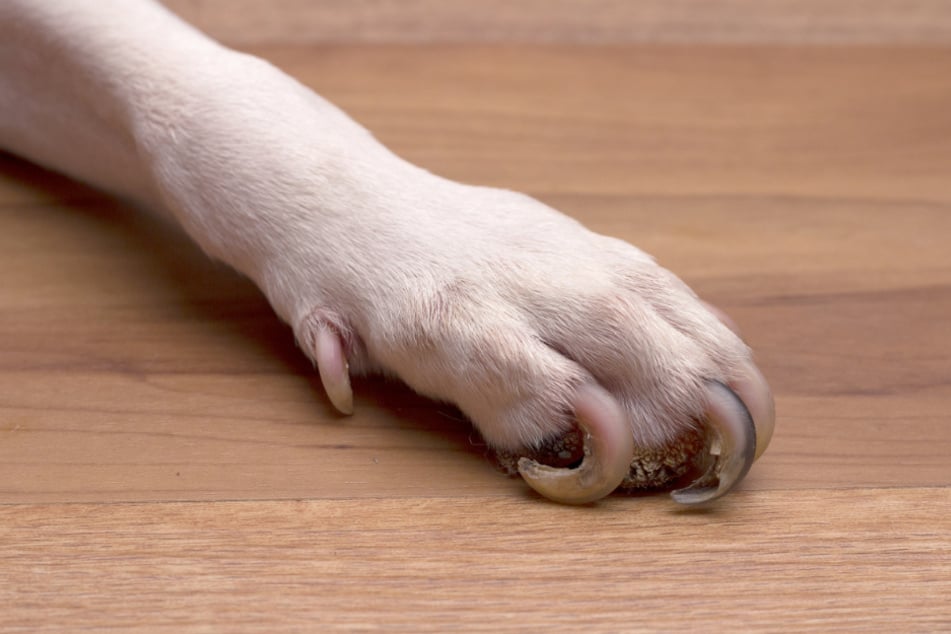
How to prepare your dog for having its nails clipped
Step 1: At first, gently stroke your dog's legs as well as the top of its paws. If your dog allows it and stays calm, positively reinforce the desired behavior by rewarding it with some treats and petting. Feel free to repeat this exercise several times a day.
Step 2: If the dog remains really relaxed when the upper side of the paws is touched, continue this same procedure but with the underside. You should only reward the dog if it calmly allows the underside of its paws to be touched and stroked. Continue to train it in this way for a few days or weeks, until the dog is completely relaxed.
Step 3: Now start to take your dog's paw directly into your hand, and hold it gently. With any luck, the dog won't pull its paw away and should now remain relatively calm. As you do this more, hold the paw for longer each time and remember to reward the dog after each little step. You can also link this step to a command such as "Give Paw."
Step 4: When the dog has mastered having its paws held, it's time to lightly press on the paws, toes, and nails. In addition, it is good to show the dog nail clipping tools and keep them within their field of vision. If these tools make a noise, then you should periodically turn them on so that the dog gets used to the sound that they make.
As with any dog training, these exercises require time, patience, and many repetitions. There are also dog schools that offer special training for nail clipping.
Get your dog used to having its nails cut
If a dog owner wants to cut their dog's nails, then a trusting and good relationship between man and animal is the most important first step. Not unlike humans, cutting a dog's nails is not particularly pleasant, and because dogs do not necessarily understand what's happening, you need to be careful that they don't lash out in defensiveness or fear.
Whoever cuts the dog's nails should always remain calm, concentrated, and unyielding, because one's physical and mental energy actually transfers to the dog. Uncertainty and fear will be the recipe for a potentially disastrous claw cutting session.
For a relatively stressless nail clipping session, your dog should be as relaxed as possible before and during the procedure. It would be ideal if your dog was already used to having their paws worked on from the time they were a puppy, but if this isn't the case, then it is advisable to help your dog prepare.
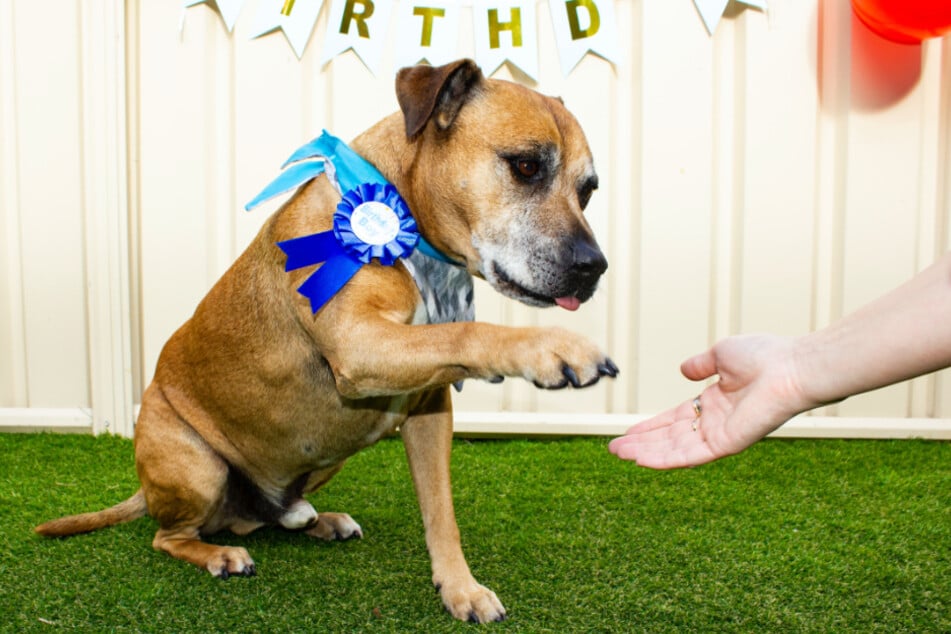
Get the right tools for clipping dog nails
When trimming a dog's nails, owners should never use their own nail scissors. This is a huge no-no because dog nails are very different to humans' and require special tools. Here's what you may need:
- Fur scissors: For dogs with very long hair, the paw will need to be freed from some fur before claw clipping can begin. These special scissors are rounded at the front so that they do not cut the dog's skin.
- Dog nail Scissors or Clippers: With one of these special cutting tools, dogs' nails can be shortened quickly and easily. When buying dog nail scissors or clippers, the size of your dog's paw should be taken into account.
- Claw Grinder / Claw Trimmer: This electronic device is a quick alternative to scissors. It acts like sand paper, rubbing and grinding down the nail.
- Claw File: A claw file is important to round the edges of cut nails, so that the dog's nail does not get stuck on anything.
- Blood Stoppers: If the dog is accidentally cut, the bleeding should be stopped as soon as possible. Thus, it is best to buy some pet safe powder, so that you can treat and stop any bleeding that might happen.
- A Light Source: Make sure that you have a mobile phone, a lamp, or a flashlight at hand. Extra light is always helpful in being able to see a dog's nails better.
- A Reward / Treat: If the dog is rewarded immediately after the claw cutting, it will build a positive association with having its nails clipped.
Whatever tool you choose to use, you should make sure that it is of a good standard of quality. Dog nails need to be cut evenly, so the device needs to fit comfortably into your hand, be relatively low-noise, and easy to use.
Pro Tip: If you present the cutting tools to the dog like they are everyday items, they will be much calmer. To do this, simply take the devices out casually in everyday situations. Noisy claw grinders should also be switched on from time to time so that the sound simply becomes background noise for the dog.
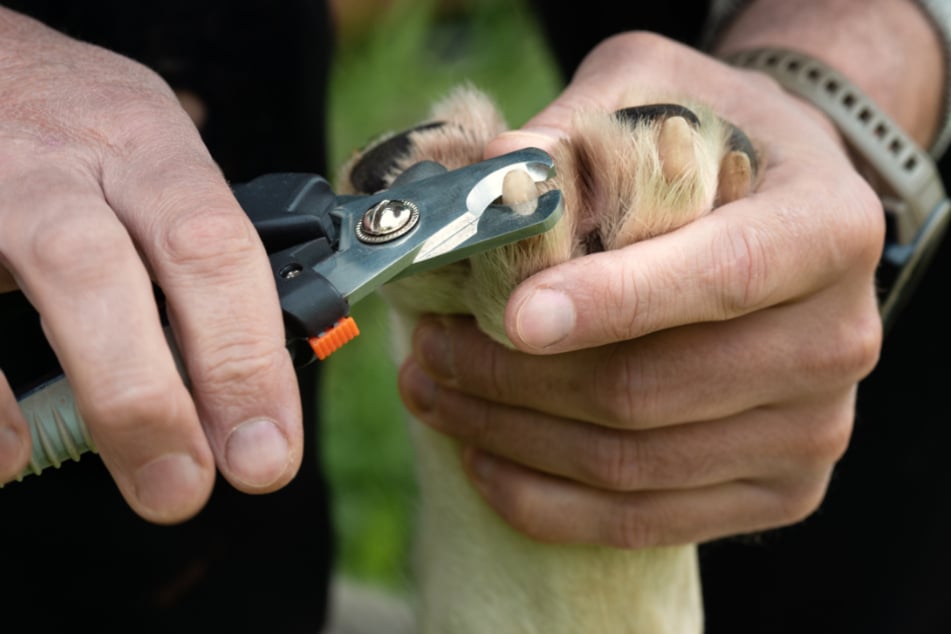
Don't cut into the quick when clipping your dog's nails
The most important rule when you want to trim dog nails is that you should never cut into the quick.
As previously mentioned, the quick is the tissue in the dog's claw that is perfused with blood and nerves. If the quick is damaged, the dog's claw will start to bleed heavily. This is very painful for the dog and will also mean that it will associate nail trimming with pain, making it even harder to do it in the future.
If your dog has white-colored nails, its quick is usually quite clearly visible, at the point where it starts to turn pink. If your dog's nails are more of a black color, though, it can be hard to tell where the quick begins.
In this case, it is advisable to first cut off less of the dog's claw and slowly work your way up until it is clear that you are going to cut into the quick.
Pro Tip: If the blood vessels in the claw are quite far forward, it is recommended to first cut or file off only a tiny bit.
After about 4 days, the quick will actually have retreated back, allowing more of the nail to be cut off. In addition, take care to make sure that the cut edge is far enough from the inside of the claw, so that the dog doesn't hurt itself.
How to stop bleeding when trimming your dog's nails
If the dog suddenly pulls their paw away, or you cut too high or into the quick, it may cause your dog's nails to start bleeding. To stop the bleeding, here are some useful tools:
- Use Soap: Put the bleeding nail on a bar of natural curd soap so that the cut is closed.
- Compress the Nail: Gently press on the injury for several minutes, until the bleeding stops.
- Use a Blood Stopper: Treat the wound with a blood stopper from a vet. Use according to the package instructions.
The cut should then be observed for several days. If it becomes infected or bleeds again, the injury should be examined by a veterinarian.
How to trim dog nails at home: A step-by-step guide to cutting dog nails
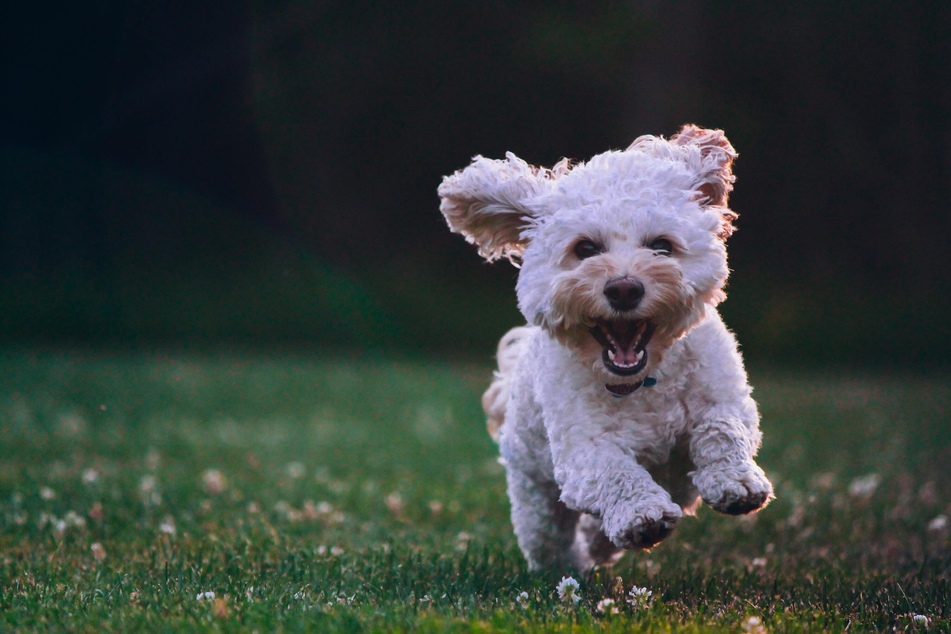
If you have a steady hand and are confident, you can cut your dog's nails yourself. Make sure your pup is calm and relaxed, and that you plan to do it when the dog is happy.
A step-by-step rundown:
Step 1: Put the dog in a relaxed position
Pay attention to which positions are the most comfortable and relaxing for your pooch. Some dog owners have small dogs lie in front of them, and have big ones stand. The important thing is that the dog is relaxed and that its nails are easy to reach.
Step 2: Familiarize your dog with the nail trimming tools
Since most dogs are very sensitive when it comes to their paws, it helps if they see and sniff the tool beforehand. If you do this extensively, and get them used to the device, then the dog will be familiar with it and can relax.
Step 3: Grasp tightly but comfortably onto the dog's paw
Grasp the paw and hold it with a pressure that is comfortable for the dog, but still quite firm. The dog may want to pull the paw away while cutting, but jerky movements increase the risk that you will injure the dog, so it's important to have a good grip.
Step 4: Gently spread out the nails
Your dog's nails will be more or less accessible, depending on your pooch's breed. For some breeds, it helps if the paw is first freed from some hair with special fur scissors. To be able to apply the cutting tool well, the dog's toes can be spread out very gently.
Step 5: Calmly and determinedly cut the nails
Cutting light nails: In these nails, the quick is usually visible or can be seen if a light is shone on the nail.
Cutting black nails: With darker dog nails, the quick is usually not visible. Use the guide we have provided below to make sure that you don't cut into the quick and cause bleeding.
Depending on whether you want to use a grinder or some clippers when cutting your dog's nails, check out one of the two following sections of this article.
Step 6: File the cut edges of the dog's nails
File the cut edges of a dog's nails carefully, and always in only one direction so that the nail does not splinter or crack. However, don't remove too much, in order to protect the dog's toes. If a nail grinder or trimmer was used, then filing is usually not necessary.
Finally: Once the dog has gotten through the sitting, they should be rewarded handsomely!
How to clip dog nails with clippers
Place the clippers sideways at a 45-degree angle to the tip of the claw, with enough distance from the quick, and cut calmly but firmly. If the dog resists, for example by pulling the paw away, whimpering, or dong something similar, do not give in. Stroking your dog, talking to it in a reassuring way, or giving it treats will reduce the dog's fear.
Remember, of course, to look out for the quick when using clippers. Be careful as clippers act the same way as scissors and, whilst they can be very accurate, can also cause injury.
How to cut dog nails with a grinder
Grinding a dog's nails is a good alternative to clipping them, because it can be easier and gentler than using scissors or clippers. It's important to note, though, that dogs can find the device's noise, and also its vibrating feeling, quite disturbing. Make sure that you have made the dog comfortable with the grinder before you proceed.
To grind your dog's nails, use the following steps:
Step 1: Make sure that your dog is calm and relaxed, give them a treat, and let them rest in your lap (if they are small enough) or on a comfortable surface like a couch.
Step 2: Keep your dog's paws comfortable by holding them firmly, and make sure you have taken note of any sensitive locations that may present a problem.
Step 3: Calmly begin grinding, only doing a small bit at a time and always supporting the dog's toe. Make sure that you are careful with how and where you grind.
Step 4: After each toe, we recommend giving your dog a little treat and a short break. Continue until you have ground all of your dog's nails down to an appropriate length.
Grind away!
How to clip dog nails that are overgrown
Cutting overgrown, or perhaps ingrown, dog nails can be difficult. Generally, though, you can use the exact same methods as previously discussed. There are, however, a few key differences that are worth noting and taking quite seriously.
To trim a dog's overgrown nails, use these additional tips:
Tip 1: Since ingrown and overgrown nails are often more sensitive and already causing the dog pain, take it slowly but be confident.
Tip 2: The quick will likely be quite big, as the dog's nails haven't been trimmed in a while. Thus, take it easy and do cutting in multiple installments to allow the quick to recede.
Tip 3: If you have serious difficulty or if the dog is really distressed, make sure to take them to the vet and have them look at it. They may choose to actually just trim the dog nails themselves.
Tip 4: After you have fixed the problem, make dog nail trimming part of your monthly schedule, so that you don't find yourself with the same problem again.
How to trim black dog nails
Cutting a black dog nail is more or less exactly the same as cutting a lighter colored one, but with a single and very important difference. A black dog claw does not change color as it gets closer to the paw, and thus it is very hard to tell where the quick is.
Here's how best to trim a black dog nail:
Tip 1: Do it very slowly. Cut off little pieces and slowly work your way up the nail.
Tip 2: When cutting the nail slowly, use a particular rhythm to stay in control. This way you will be able to better tell where the quick starts.
Tip 3: Look for the light colored circle that will eventually appear on the end of the nail as you cut. Stop as soon as you can see the white circle, as it is near the beginning of the quick.
Tip 4: Be patient and keep your dog as calm as possible. It is much harder to cut black dog nails, but not impossible.
How to clip dog nails: A round-up
If you're feeling unsure, have your dog's nails trimmed at the vet's office or a dog salon, and ask to watch. Dogs' nails should generally be shortened every two to five weeks, though, so it is better to learn how to do it yourself.
Ask questions and pick up some tips from the experts – combined with these pointers, you'll be one in no time!
Cover photo: 123RF / Tan4ikk


